Whyte’s E-180 RSX MX Super Enduro electric mountain bike has been updated for 2023, moving from 27.5in wheels to a mixed-wheel setup (29in front, 27.5in rear).
It’s Whyte’s longest-travel, enduro and downhill-ready electric mountain bike, sporting a 180mm-travel Fox 38 Factory fork and 170mm of Horst-link rear suspension, damped by a Fox Float X2 Factory rear shock.
Elsewhere, it’s fitted with SRAM’s 12-speed electronic wireless Eagle AXS groupset and Code RSC brakes. It’s powered by the 85Nm Bosch Performance Line CX electric bike motor and a 750Wh battery.
Adjustable geometry, via the Shape.It Link, slackens the 63.2-degree head angle to 62.7 degrees and lowers the bottom bracket by 8mm.
It's a compelling proposition that makes it a leading contender in our 2023 Bike of the Year eMTB category.
Whyte E-180 RSX MX Super Enduro frame, suspension and motor
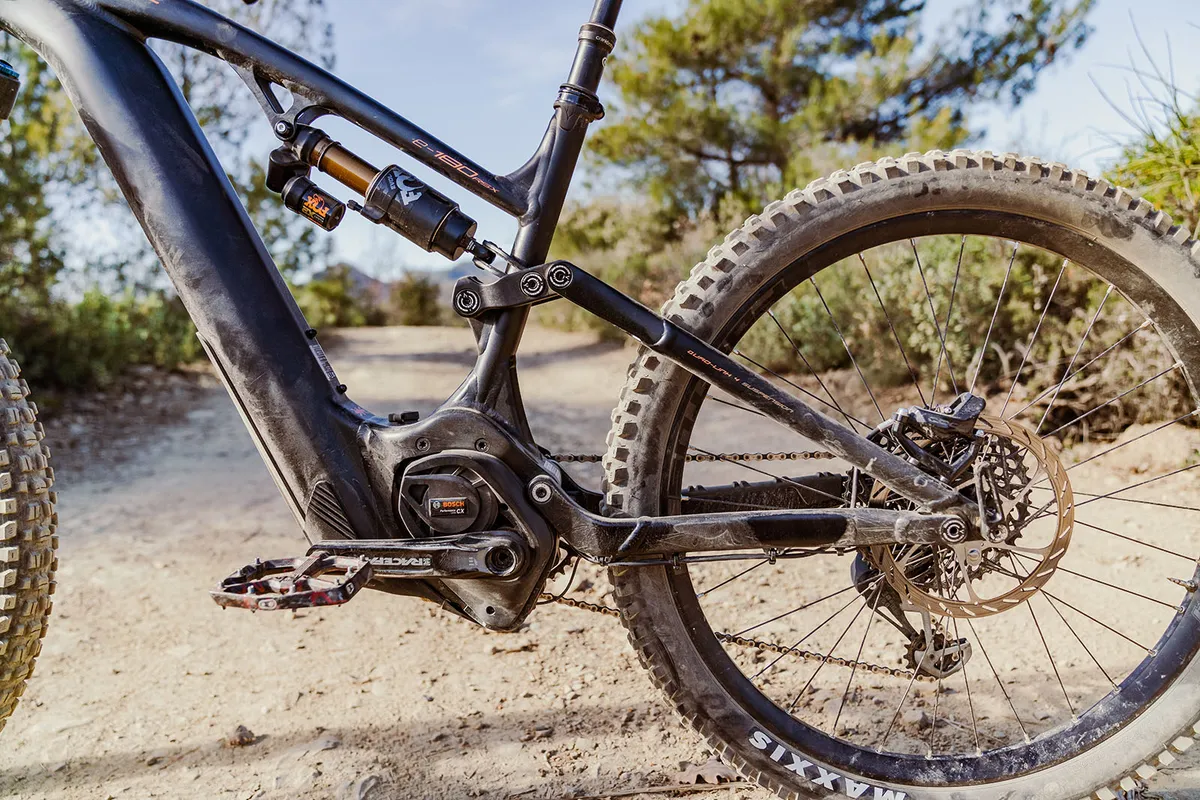
Built around the principle of lowering its centre of gravity (COG), Whyte has rotated the E-180’s motor upwards, positioning the battery beneath it, instead of in front or on top. The brand claims this improves handling on slow, tight terrain and at high speed.
Cables are routed internally via ports on the down tube. It has water bottle cage mounts, but their location means only smaller bottles, such as Fidlock’s TWIST bottle 450 fit.
Chunky chain-slap protection is fitted to the driveside chainstay and the Boost 12x148mm rear axle spacing features SRAM’s Universal Derailleur Hanger.
The E-180's Horst-link rear suspension design has 170mm of travel. This is claimed to be sensitive at the start of its travel, while providing plenty of mid-stroke support and bottom-out resistance for big hits.
Whyte has developed a custom tune for the Fox Float X2 rear shock fitted to the E-180.
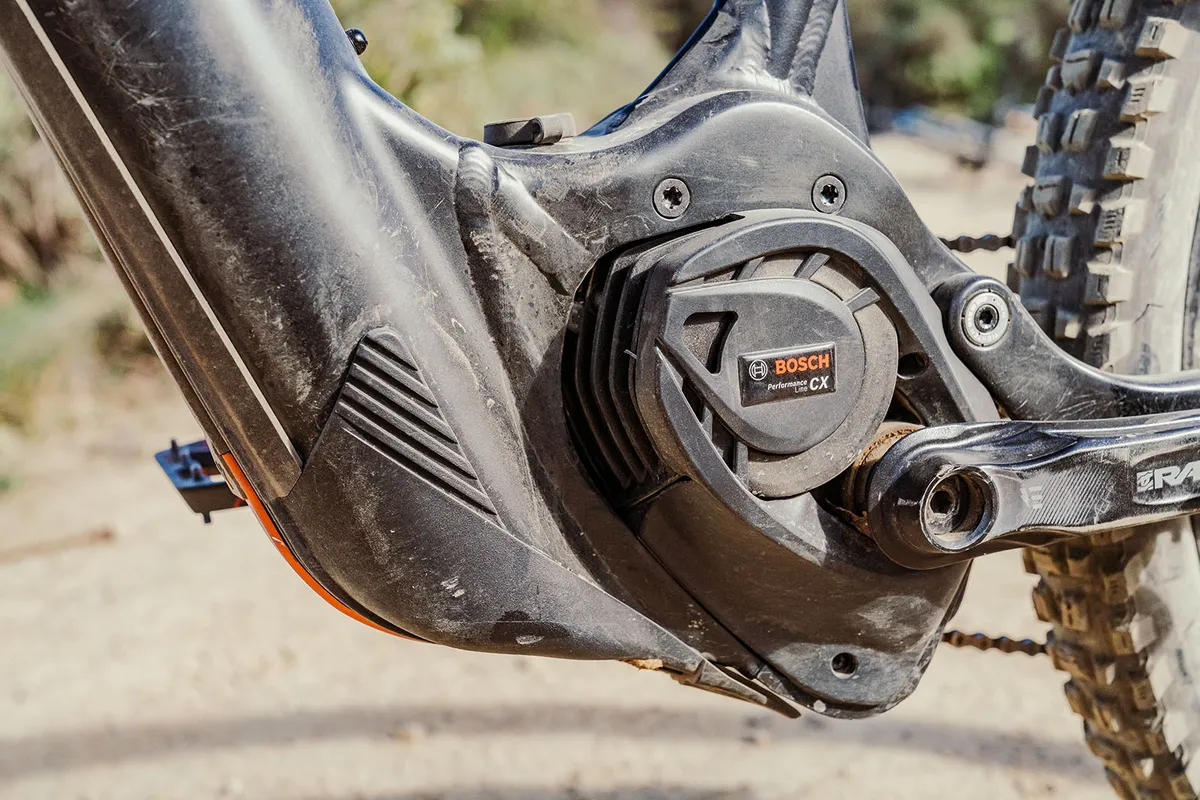
The Bosch Smart System Performance Line CX motor is Flow smartphone-app compatible, a further upgrade over the previous E-180’s basic Purion controller.
The motor has 85Nm of torque and is powered by a 750Wh battery, that slides into the Whyte’s down tube using Bosch’s rail system.
Whyte E-180 RSX MX Super Enduro geometry
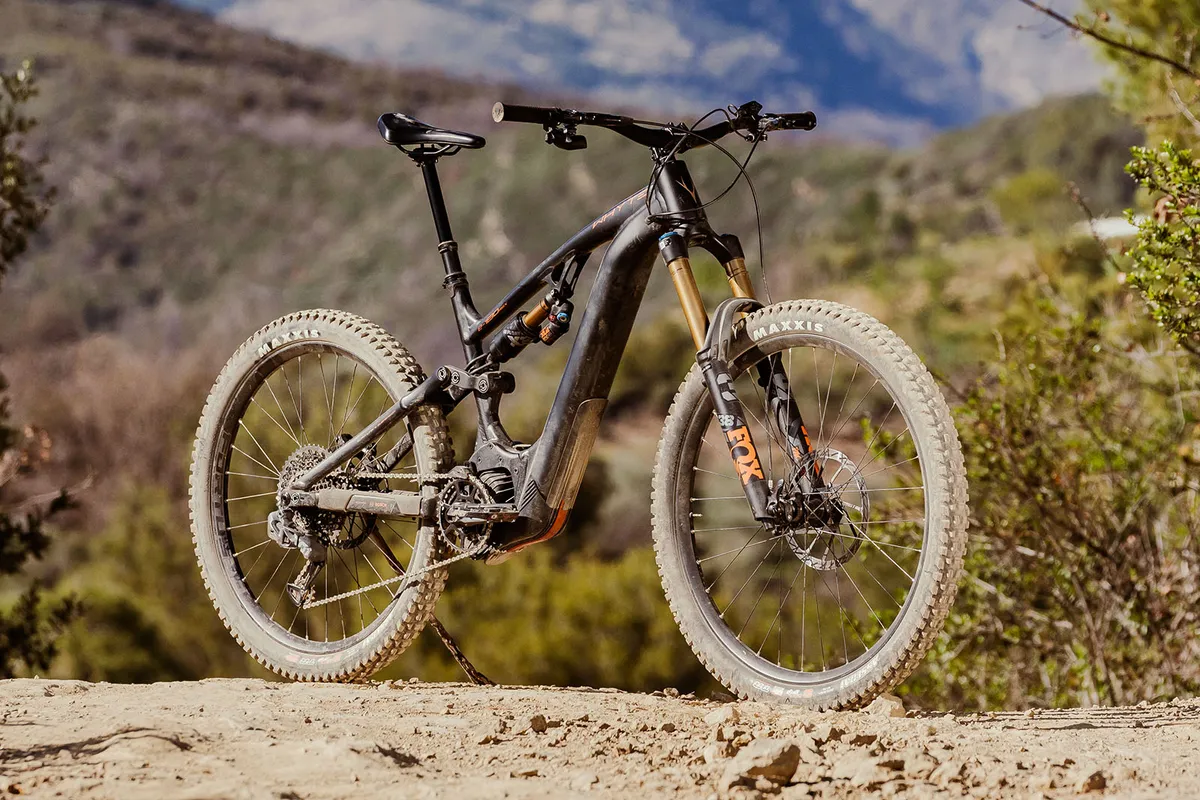
The bike's geometry is truly suited to gravity-focused riders, but it's only offered in three sizes, with reach figures starting at 455mm (medium) and lifting to 510mm (extra-large).
Thanks to the Shape.It link on the rear-shock yoke, there are high and low settings.
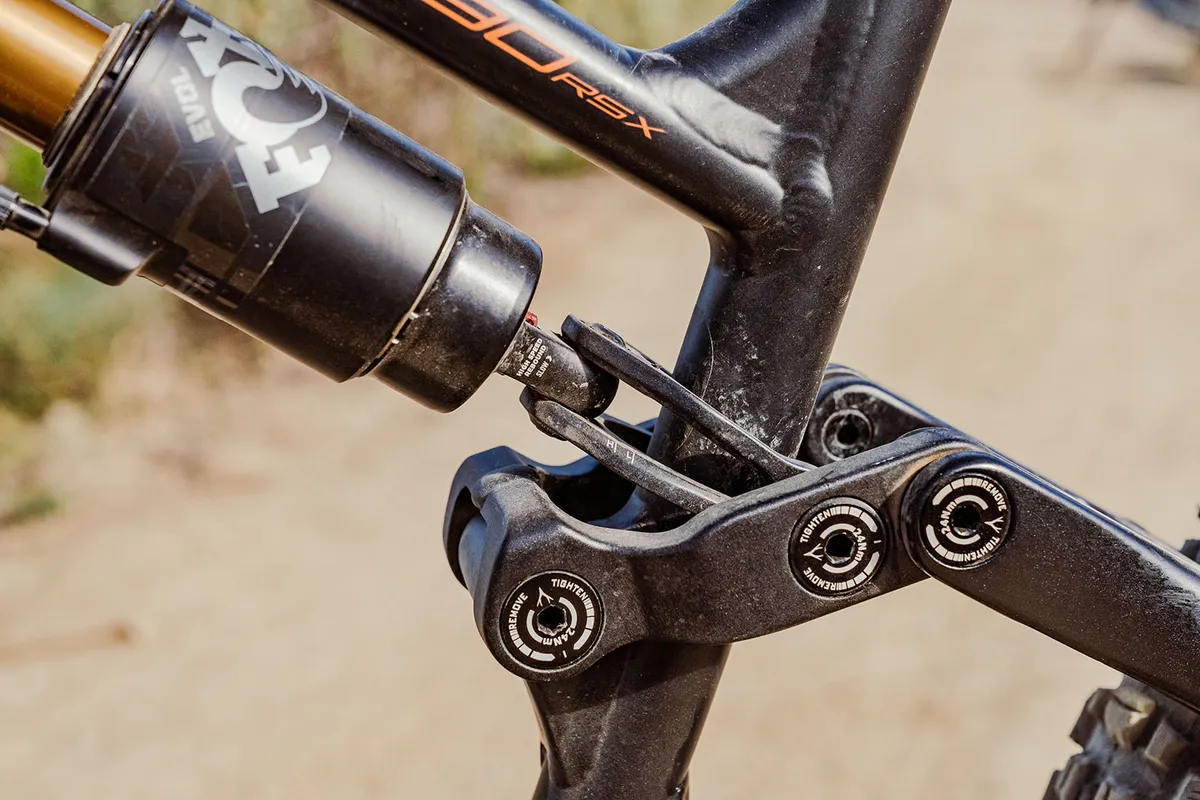
The head angle is 63.2 degrees in the high setting and slackens to 62.7 degrees in the low position. Bottom bracket height is 349mm (high) and 342mm (low).
Elsewhere, chainstay lengths are 444mm for all sizes, and the seat tube angle hovers around 75 degrees. Wheelbase figures span from 1,255.55mm to 1,324.6mm.
| | M | L | XL |
|---|---|---|---|
| Seat angle (degrees) | 75.4 | 75.2 | 75 |
| Head angle (degrees) (low/high) | 62.7 / 63.2 | 62.7 / 63.2 | 62.7 / 63.2 |
| Chainstay (mm) | 444 | 444 | 444 |
| Seat tube (mm) | 420 | 445 | 470 |
| Top tube - effective (mm) | 609.6 | 642.8 | 674.7 |
| Head tube (mm) | 100 | 115 | 130 |
| Bottom bracket drop (mm) (low/high) | 341 / 349 | 341 / 349 | 341 / 349 |
| Wheelbase (mm) | 1,255.5 | 1,290.5 | 1,324.6 |
| Standover (mm) | 769 | 770 | 772 |
| Stack (mm) | 631.8 | 645.2 | 658.6 |
| Reach (mm) | 455 | 483 | 510 |
Whyte E-180 RSX MX Super Enduro specifications
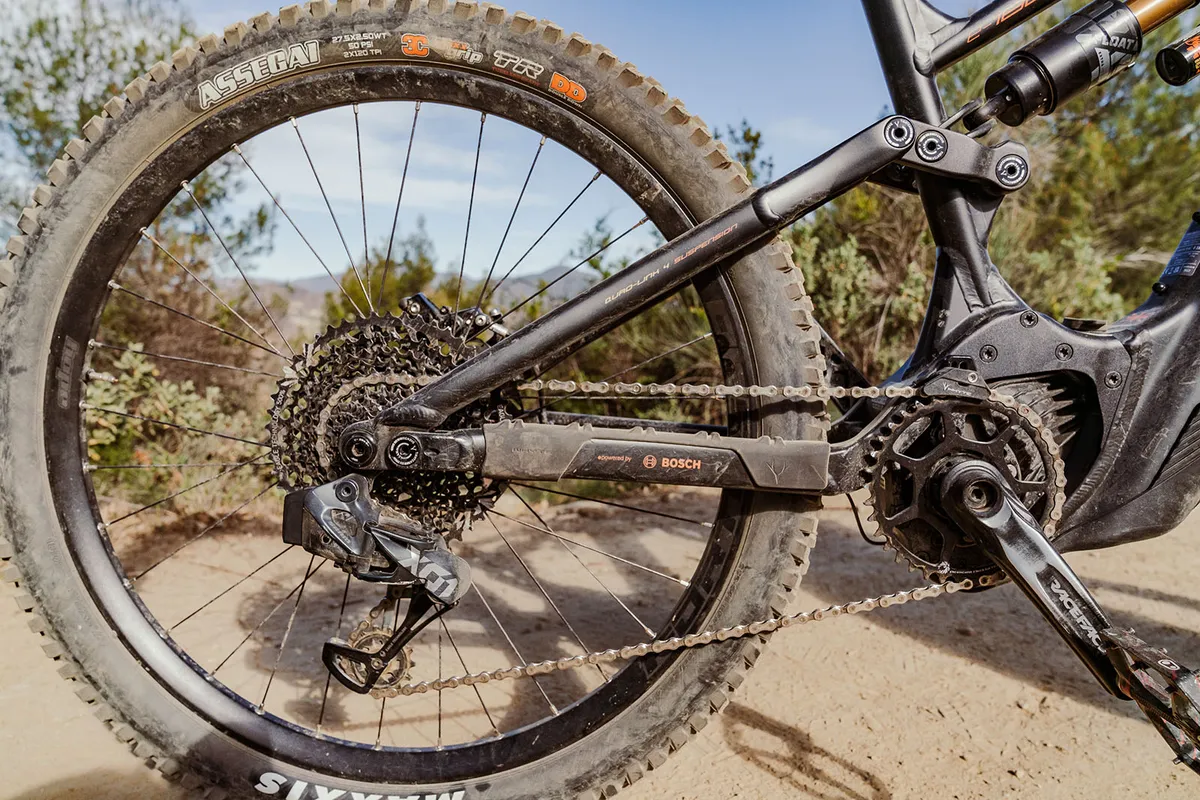
Sitting one model down from the top-of-the-range E-180 Works bike, the RSX is still fitted with lust-worthy components.
Up-front is Fox’s 38 Factory fork, matched with Fox’s Float X2 Factory rear shock. SRAM’s X01/GX Eagle AXS drivetrain is fitted, plus Code RSC brakes with a 220mm front rotor and a 200mm rear.
Hope Fortus 30 rims are built on Hope Pro 4 hubs, wrapped with Maxxis Assegai MaxxGrip EXO+ 29x2.5in (f) and Assegai MaxxGrip DoubleDown 27.5x2.5 (r) rubber.
It has a Race Face bar and stem, a Crankbrothers Highline 3 dropper post with 150mm travel (size large) and a Fizik Terra Aidon saddle.
My size-large test bike without pedals weighs 26.88kg.
Whyte E-180 RSX MX Super Enduro ride impressions
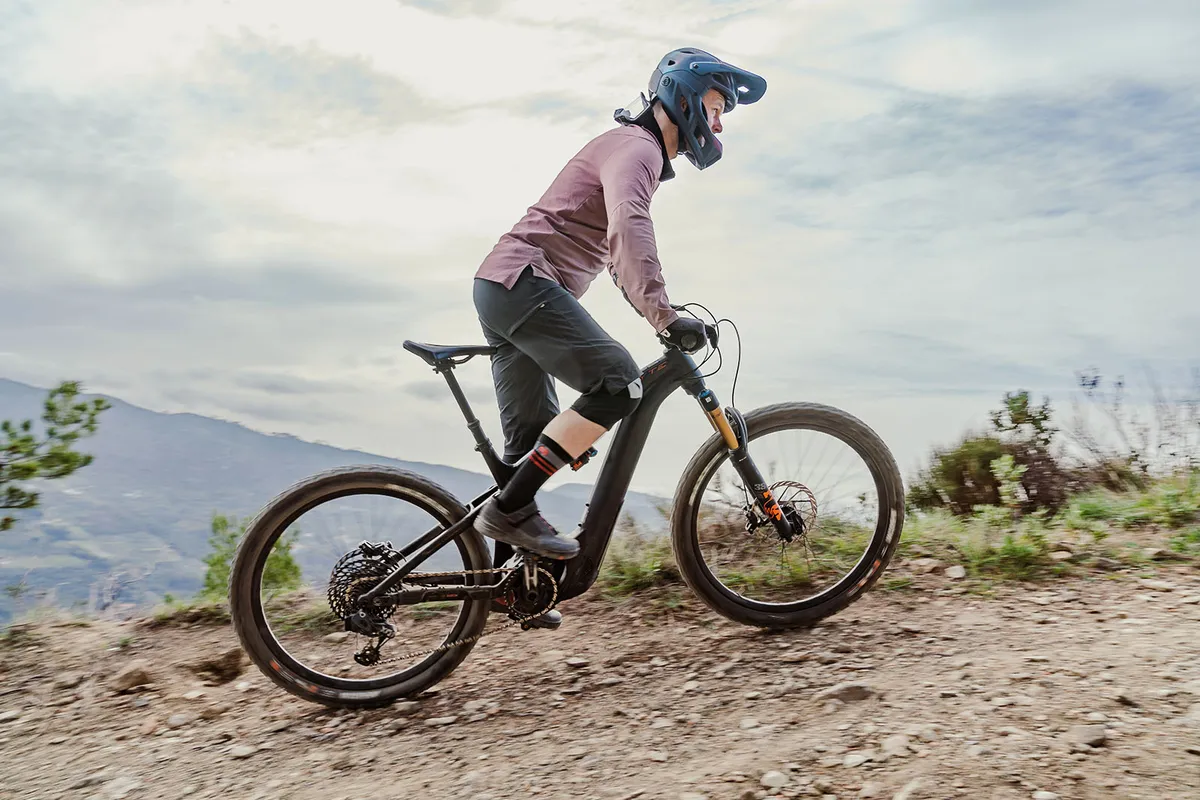
I tested Whyte’s E-180 RSX MX Super Enduro ebike in Scotland’s Tweed Valley, host to the UK’s round of the enduro world cup.
The valley’s enduro and downhill trails are well suited to the Whyte’s intended riding style. Conditions ranged from dry and dusty through to freezing cold with plenty of wet weather thrown in for good measure.
Setup
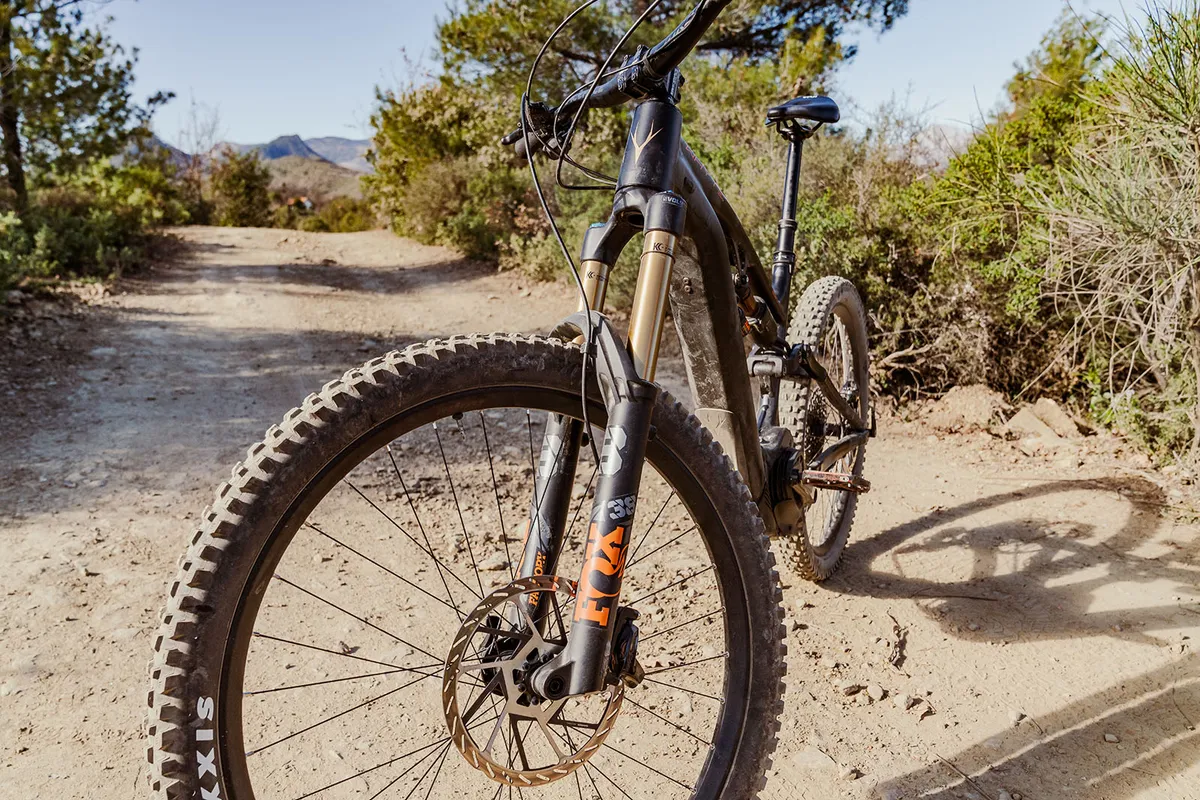
I spent a day setting up the E-180 using a Motion Instruments data acquisition system with Whyte’s senior design engineer Sam Shucksmith.
Trying to find a good front-to-back suspension balance was the aim. For my 76-77kg kitted up weight, I ended up with 111psi and one volume-reducer spacer in the fork, with all damping adjustments set to fully open.
I finished with 245psi in the rear shock with no volume-reducer spacers and all the damping adjustments fully open.
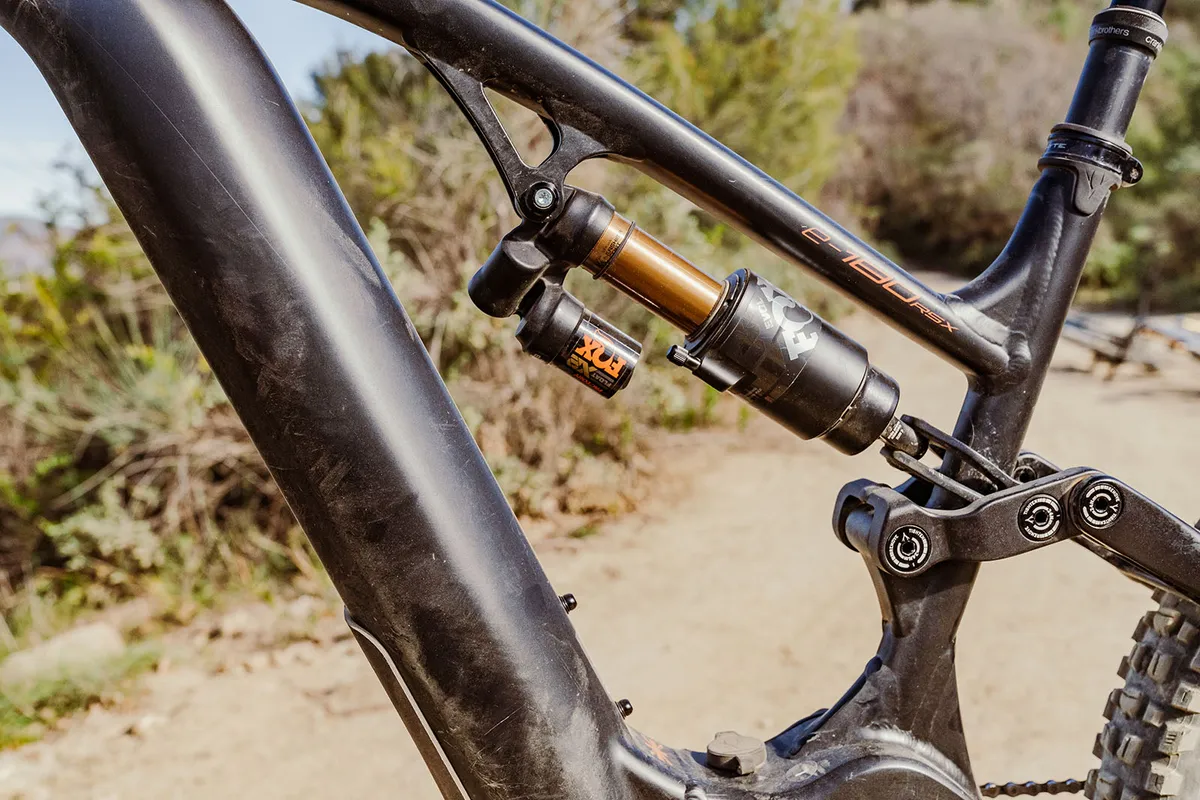
These settings felt great when riding fast and hard, but lacked comfort and grip at lower speeds. During the test period, I reduced shock pressure to 231psi and the fork to 105psi (a 5.4 per cent change) to improve comfort and grip. I then left these settings unchanged for the duration of the test period.
After trying the bike in its low Shape.It link position, I decided to return to the high setting, preferring how it rode. In the high position, the bottom bracket measured 340mm, lower than Whyte’s 349mm claims.
Whyte E-180 RSX MX Super Enduro climbing performance
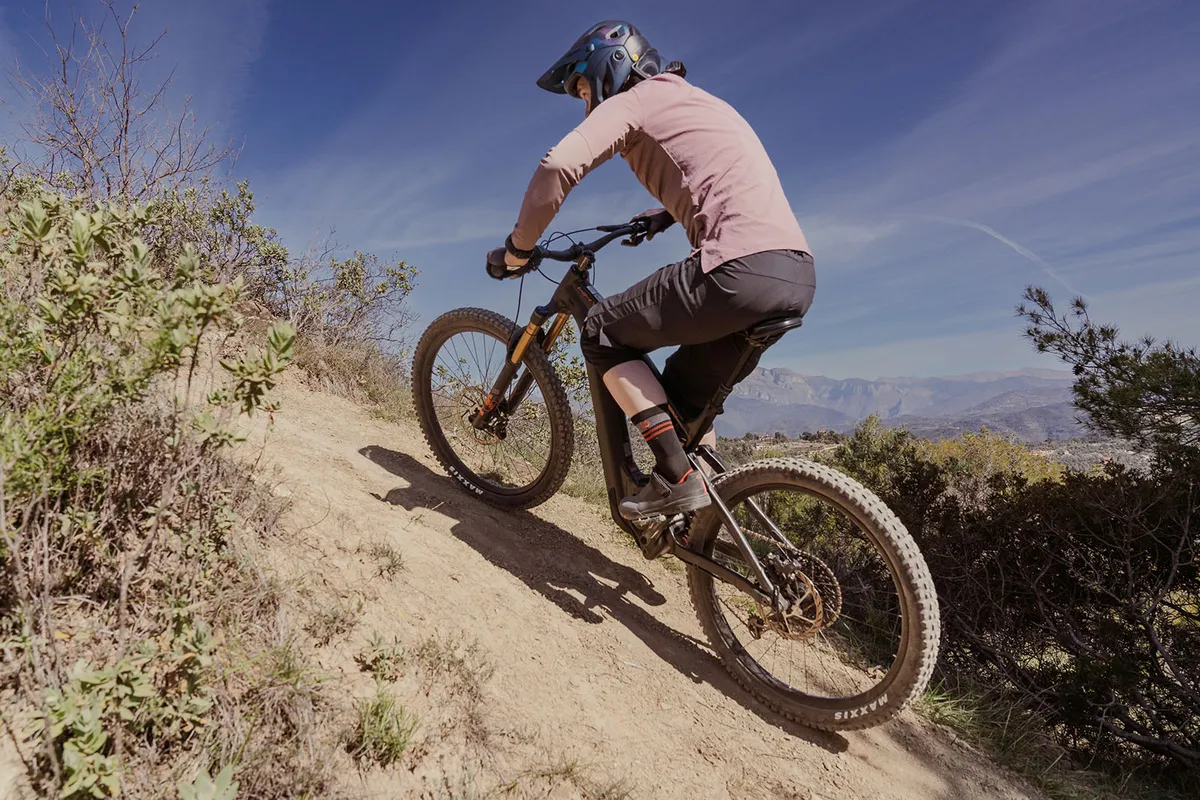
Uphill, the E-180 RSX MX has a balanced and flat feel, where the bars, bottom bracket and saddle feel well in proportion, with comfortable and appropriate spacing.
This reduces uncomfortable and destabilising weight biases into either the front or back of the bike.
Because your weight is distributed evenly by the bike’s geometry, grip is easy to find and create at the rear wheel without the front one lifting or becoming light on particularly steep sections.
Comfort is also good, with rider weight distributed relatively evenly between bars and saddle, helping reduce fatigue and limiting discomfort.
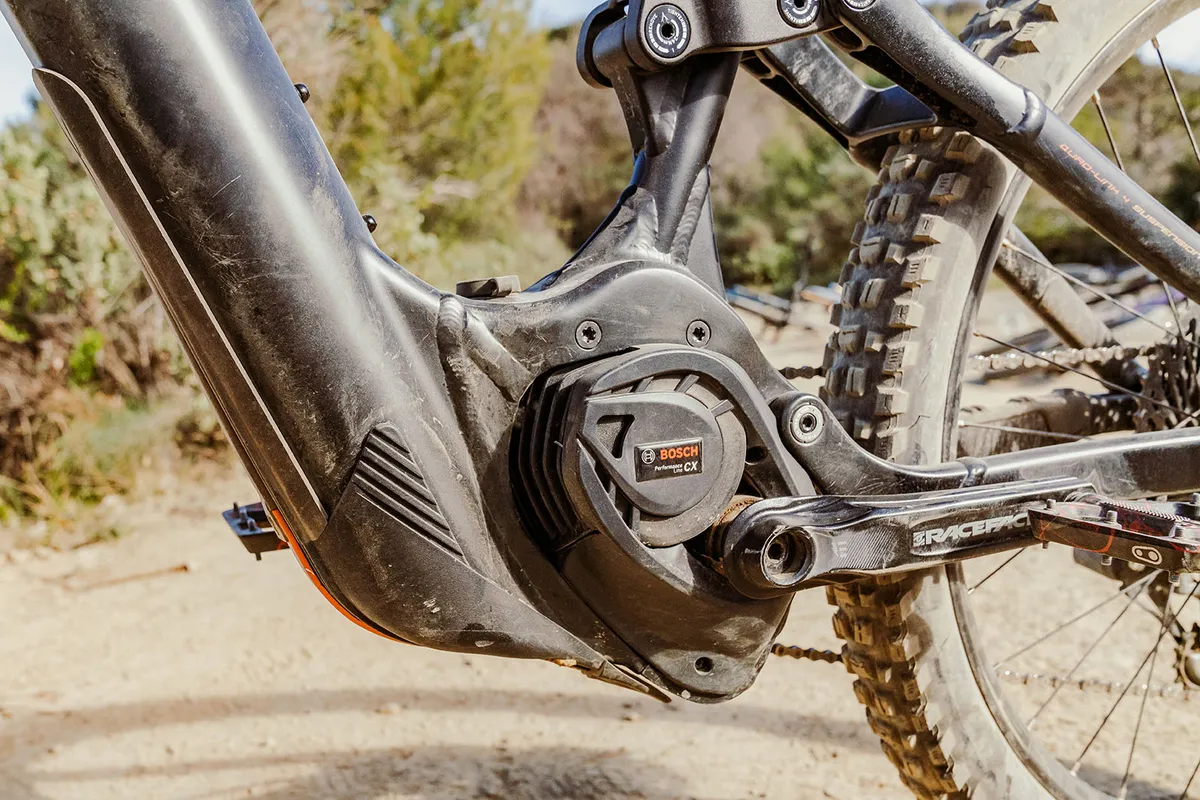
However, the 75.2-degree seat tube angle could be steeper. At times, your feet can feel stretched in front of your hips, especially as gradients really steepen. This marginally reduces pedalling efficiency.
Sliding the seat as far as possible forward in the post’s clamp, and angling it nose-down steepens the effective seat tube angle. This helps move your hips more directly over the bottom bracket, but it’s not a substitute for a steeper angle in the first place.
Its suspension further mitigates against geometry changes as gradients steepen.
Its kinematic and air-spring progression, along with damper tune, create a robust ramp-up, helping reduce increased sagging as rider weight shifts rearward on steep sections.
This preserves the bike’s shape well.
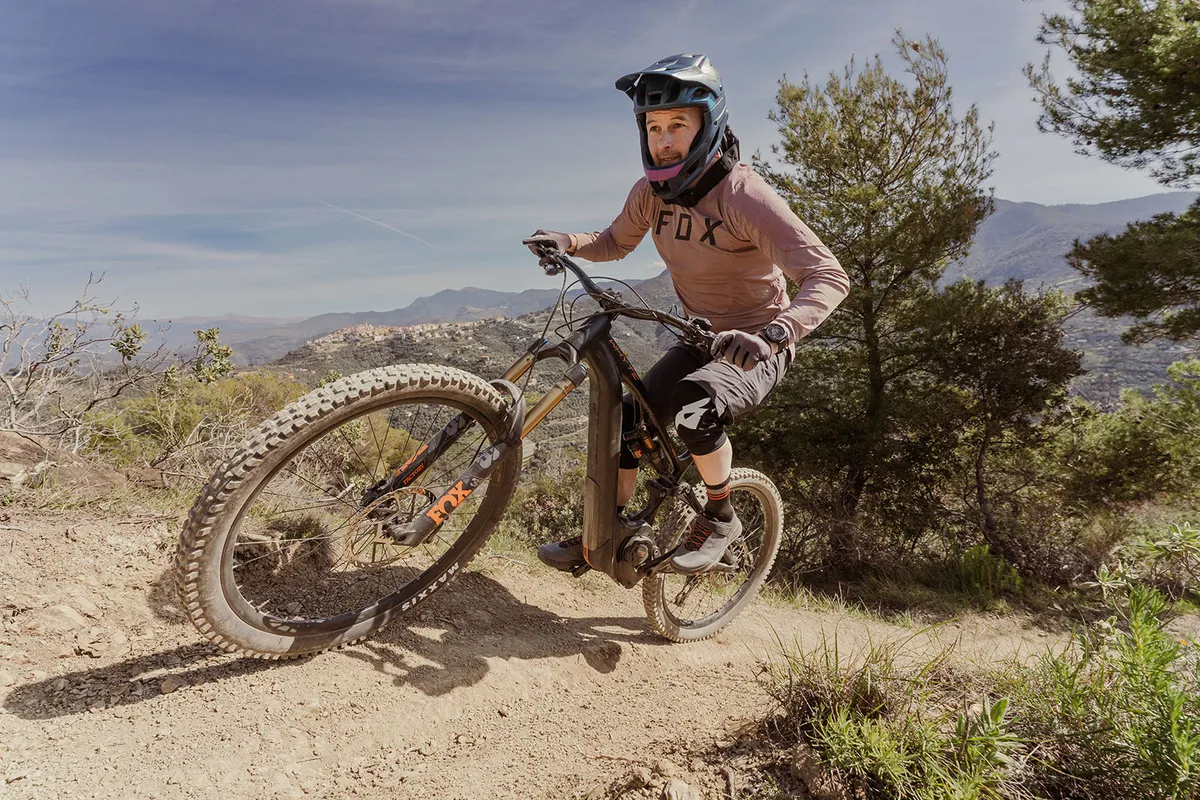
Maxxis’ MaxxGrip Assegai offers formidable traction on the rear, despite it more frequently being used as a front tyre.
Although the rear suspension has plenty of ramp-up, it’s also impressively supple. The shock moves in and out of its beginning stroke, freely absorbing smaller trail chatter, increasing grip and comfort.
The suspension lends itself well to ploughing into gnarly terrain, but the relatively low bottom bracket (340mm measured in the high setting) means pedal strikes can happen if you’re not taking care.
While not a significant issue, you do need to be more aware of the terrain compared to bikes that sit higher off the ground.
Motor performance and battery life
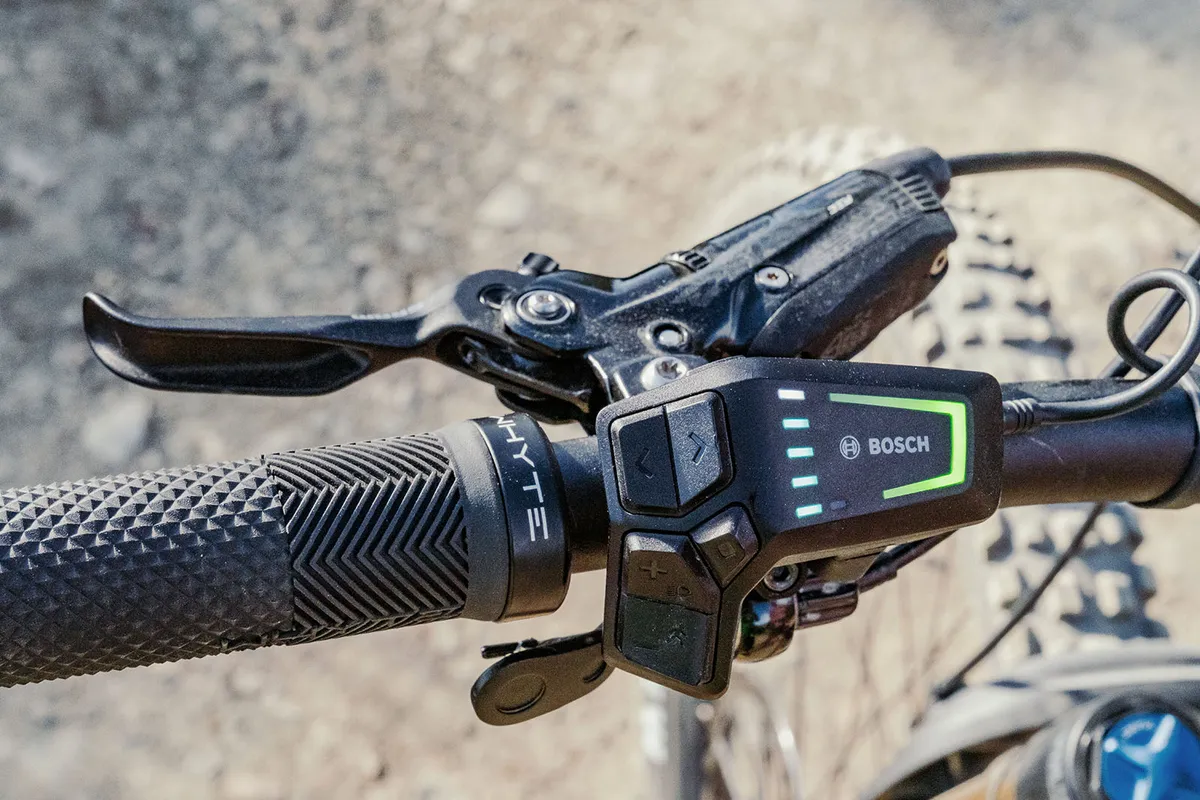
Bosch’s Performance Line CX Smart System motor has benefitted from several over-the-air updates via the Flow smartphone app, improving battery life compared to when it was first launched. Hitting 2,000m of ascent in Tour+ is now a regular prospect, even with tacky MaxxGrip tyres installed.
That drops to 1,400m to 1,600m of ascent in eMTB mode, with Turbo removing a few more metres.
The power on offer is also impressive, with it building right up to the assistance limit. The harder you pedal, the more the Performance Line CX motor works. This makes light work of even the toughest climbs.
Whyte E-180 RSX MX Super Enduro descending performance
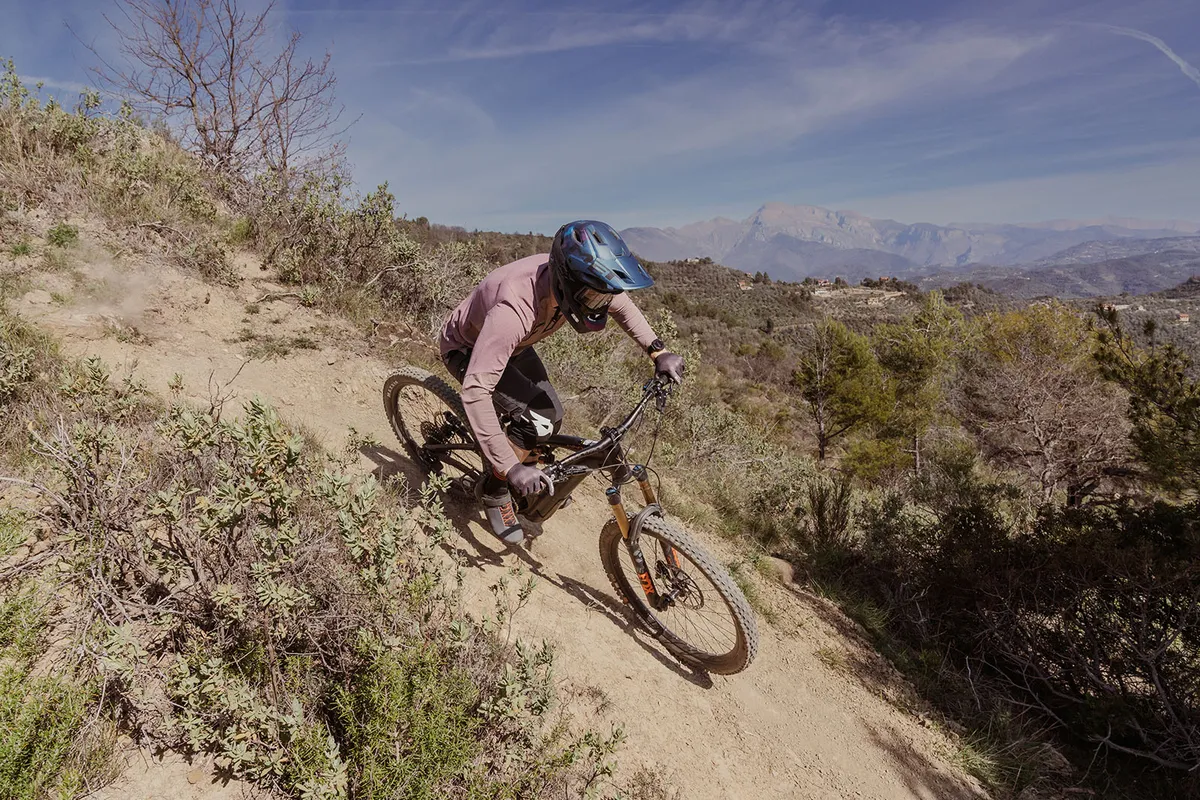
The E-180’s balance is very neutral, and its overall stability is high.
It doesn’t have the archetypal easy-to-break-traction-feel of mullet bikes. Instead, it exudes control and composure regardless of how fast you’re riding or how gnarly the trails are.
This certainly flies in the face of how you’d expect a mullet bike to ride, with the cliché of party at the back, grip at the front not ringing true.
The mixed wheels work in its favour. Driving grip through the front end of the bike on steeper trails or loading it up in turns doesn’t result in a fishtailing rear end.
Traction needs to be broken deliberately and forcibly, but in the same respect it's easy to control and maintain.

Combine this traction-rich and super-stable platform with a great front-to-back balance, and the E-180’s descending performance is virtually untouchable.
Its stack height (645.2mm), reach (483mm), bottom bracket height (340mm, measured), and seriously low centre of gravity all combine to create that balance.
Your hands and feet feel as though they’re in perfect harmony, the bike defaulting its rider to a composed, neutral, central and strong riding position, which helps to conserve energy.
You don’t have to work the bike to get it to stick a line. Instead, you’re almost passive, letting it do the heavy lifting. It means you can concentrate on going faster or riding with even more control.
That neutrality translates to amazing cornering performance, helped by the low-slung motor.
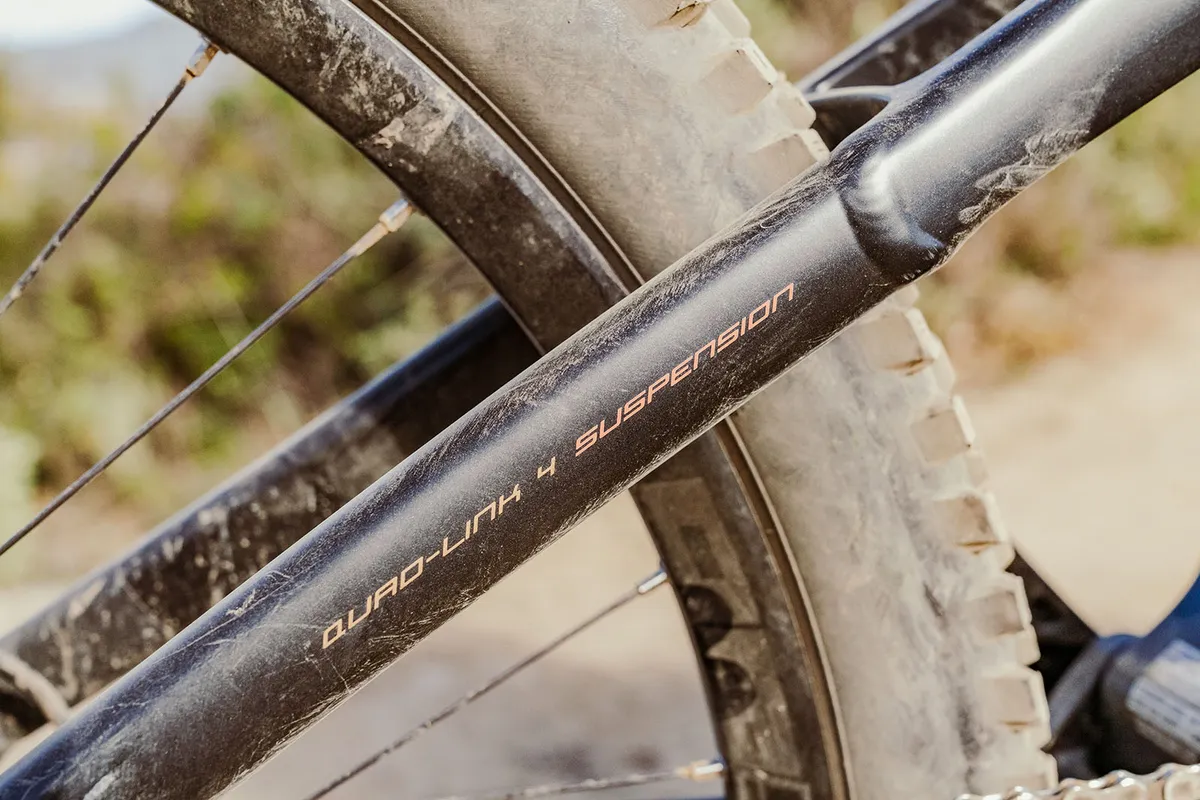
Leaning the E-180 over onto its tyres’ edges feels natural and controlled. Grip is instantly abundant and predictable, and increasing the lean angle only makes it feel better.
Switching between turns doesn’t require huge weight changes, instead the bike responds better to lighter movements. This doesn’t mean it’s unstable or twitchy. In fact, quite the opposite is true; the on-rails analogy couldn’t be more apt for the E-180 – it loves to hook turns.
Hiding its 26.88kg weight well, on technical, tight and twisty trails, it feels impressively agile and can change direction quickly.
Its suspension only improves things.
Thanks to a supple beginning stroke, it absorbs smaller bumps well, providing both comfort and grip.
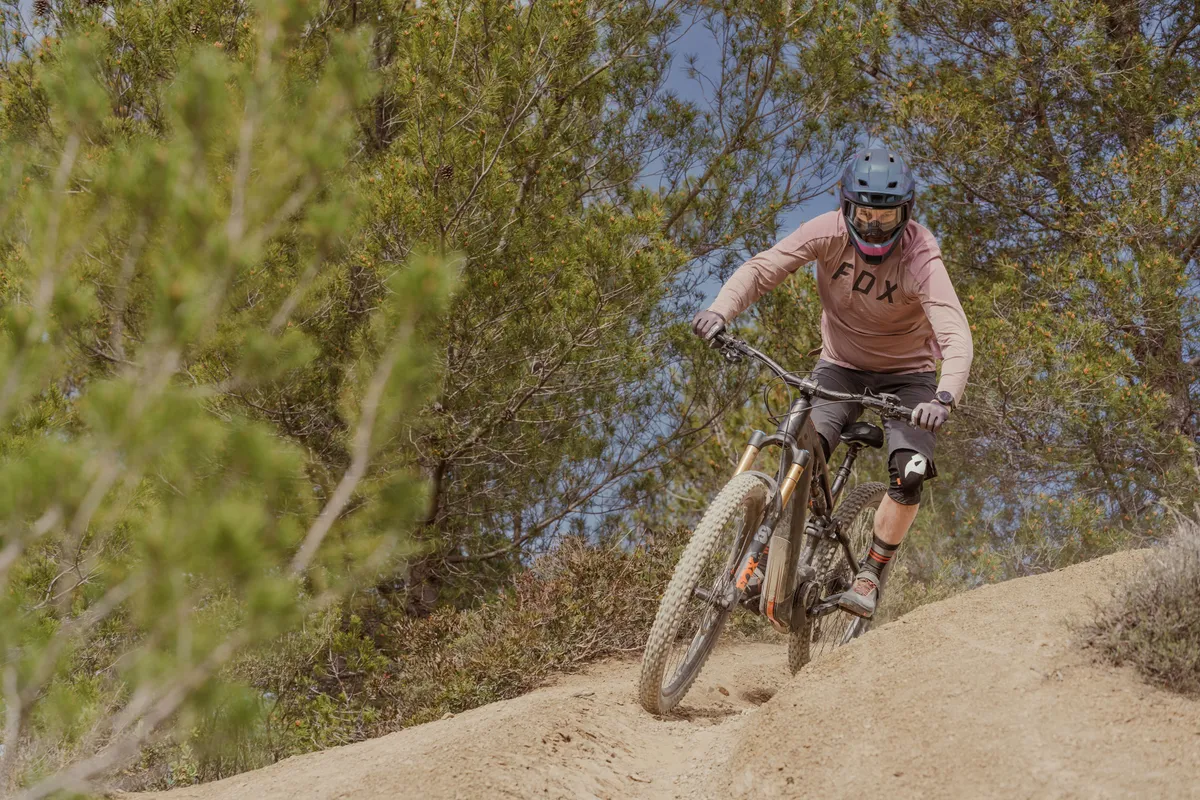
This is accompanied by a robust ramp-up in the mid part of its travel, helping it maintain its geometry in high-load turns and drive speed from the terrain when pumping.
Bottom-out resistance is also impressive. The Float X2 air spring and kinematic work well together to cushion big, deep-travel hits.
There’s plenty of scope to run the bike harder – for a racier setup designed for big hits and high speeds – or quite a bit softer for more comfort and grip.
Even when run a bit softer, I found it didn’t lose that fast-charging feel of the harder setup, but comfort was vastly improved.
Still, to get the most from the E-180, it needs to be ridden hard and fast with plenty of confidence. Being mindful to take advantage of the attack position it defaults its riders to is imperative.
Backing off the gas or confidence just doesn’t feel as inspiring or rewarding.
How does the Whyte E-180 RSX MX Super Enduro compare to the Nukeproof Megawatt 297 RS?
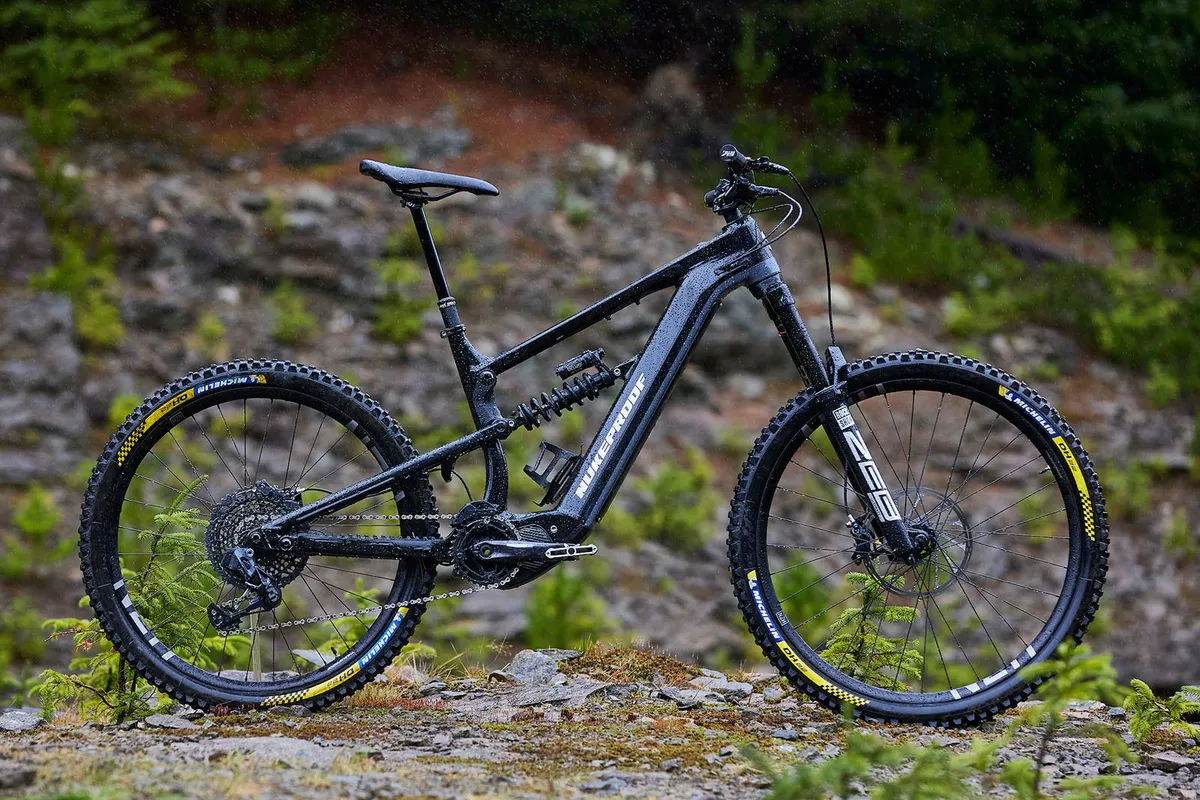
Despite sharing similar enduro-ready, descent-focused geometry and long-travel rear ends, the Megawatt and E-180 have unique characters out on the trail.
The Megawatt is easier to get on and ride quicker straightaway, its tall stack and low bottom bracket creating a confidence-inspiring stance.
Although the E-180’s geometry offers spades of confidence and stability, it feels best when ridden aggressively. At higher speeds, the E-180 has more in the tank, exceeding the outright performance, speed and control potential of the Nukeproof.
The extra tuneability of the Whyte’s air-sprung rear shock, and its grippy and predictable Maxxis tyres compared to the Nukeproof’s slow-rolling Michelins give it the edge when you’re looking for a few extra seconds on the race track – or for more control down your favourite run.
The £1,200 cheaper asking price of the Nukeproof is appealing given the performance differential isn’t cavernous. Both share SRAM’s AXS drivetrain components and range-topping dampers, even if they’re from different brands.
The biggest difference is the motors. The Shimano-powered Nukeproof arguably feels down on power compared to the Whyte’s Bosch. Since a software update, the Bosch’s battery life is now as good as, or even slightly better than Shimano’s once-frugal motor.
All said and done, the performance potential, tuneability and Bosch motor help justify the extra cost of the Whyte, edging it fractionally ahead of the Nukeproof.
Whyte E-180 RSX MX Super Enduro bottom line
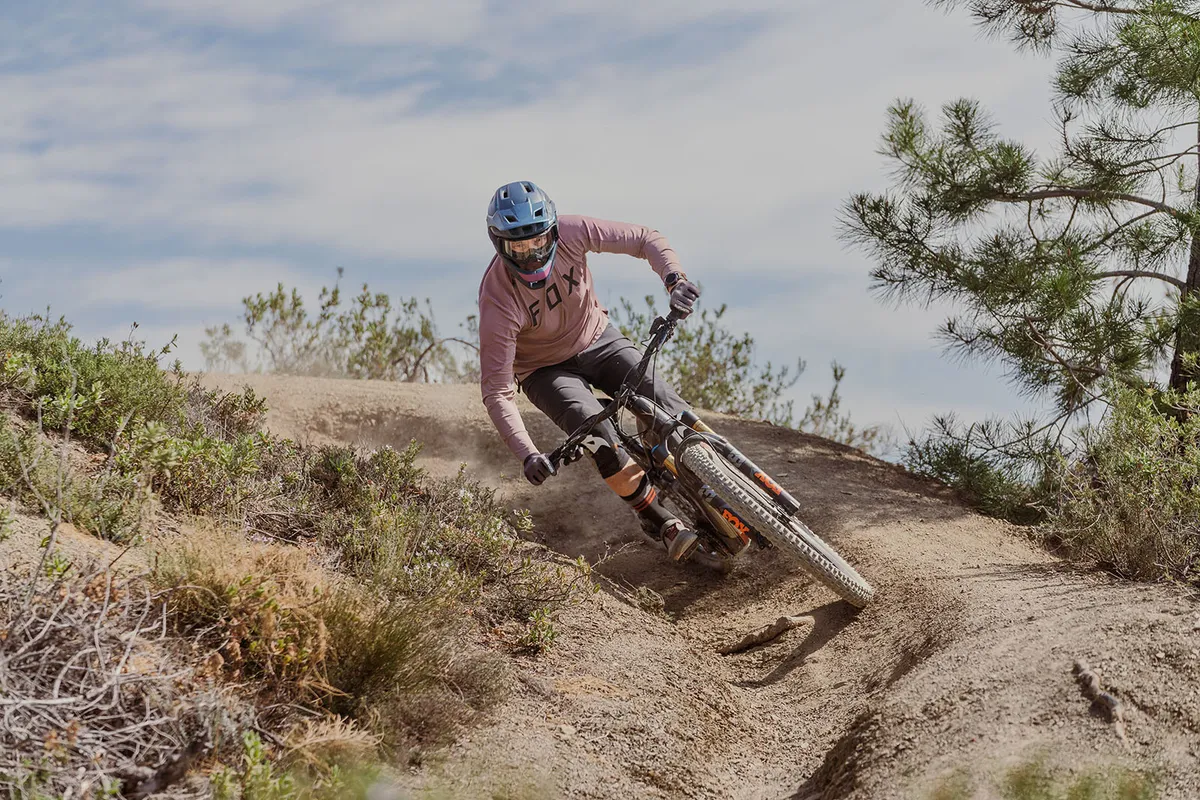
The all-new mullet iteration of the E-180 builds on the previous generation, adding more speed and control while being slightly easier to ride when you’re just cruising.
It’s still at its best when you’re charging hard. It does a vast amount of heavy lifting by offering stability and balance in spades thanks to sorted geometry, a low centre of gravity and well-tuned suspension.
Despite its high asking price, value for money is reasonable. Fox’s Factory dampers feature, while SRAM’s Eagle AXS drivetrain performs well. Except the grips, there’s not a single house-brand component on the E-180 RSX, helping justify its cost.
This is a true gravity-focused racer’s ebike, excelling at higher speeds on gnarly terrain.
eMTB Bike of the Year 2023 | How we tested
Full-power, high-performance, gravity-focused ebikes need to behave like mini-DH bikes on the descents, but provide a comfortable, brisk and efficient means to climb back up.
A gutsy motor will do the heavy lifting when ascending, but little can mitigate poor geometry, bad spec choices and sub-standard suspension.
When searching for your perfect full-power ebike, we ecommend going big on travel (150mm plus), battery capacity (630Wh or more) and motor power (85Nm or above).
Spot-on geometry will improve both uphill and downhill performance; steep seat tube angles, mid-length chainstays and slack head angles are all desirable.
Senior technical editor Alex tested eight full-power eMTBs on his home trails in Scotland’s Tweed Valley, home to the UK’s round of the Enduro World Cup and the 2023 XC Olympic and Marathon World Championships.
Testing happened from November to late March, subjecting the bikes to some of the harshest weather conditions known.
The pedigree and scope of the terrain on his doorstep is second to none, helping Alex push our eight bikes to their limits. Riding them back-to-back separated the strong from the weak and finally, a winner was chosen.
Our 2023 eMTB Bike of the Year contenders
- Nukeproof Megawatt 297 RS
- Orbea Wild M-Team
- Pivot Shuttle LT 29 Ride SLX/XT
- Santa Cruz Bullit SS C
- Specialized Turbo Levo Expert
- Transition Repeater NX Carbon
- Trek Rail 9.8 XT Gen 3
- Whyte E-180 RSX Super Enduro
Thanks to…
Thanks to our sponsors Crankbrothers, FACOM Tools, MET helmets, Bluegrass Protection, Supernatural Dolceacqua, Le Shuttle and BikePark Wales for their support in making Bike of the Year happen.
Product
| Brand | whyte |
| Price | 8799.00 GBP |
| Weight | 26.8800, KILOGRAM (L) - without pedals |
Features
| Fork | Fox 38 Float Factory, 180mm (7.08in) travel |
| br_stem | Race Face Atlas, 35mm |
| br_chain | SRAM GX Eagle |
| br_frame | 6061 T-6 hydroformed aluminium, 170mm (6.69in) travel |
| br_motor | Bosch Performance Line CX motor, 750Wh Powertube battery, Bosch LED Remote |
| Tyres | Maxxis Assegai 3C MaxxGrip EXO+ 29x2.5in f, Maxxis Minion DHR II 3C MaxxGrip DoubleDown 27.5x2.5in |
| br_brakes | SRAM Code RSC, 220/200mm rotors |
| br_cranks | Race Face Aeffect E-Bike, 36t |
| br_saddle | Fizik Terra Aidon |
| br_wheels | Hope Fortus 30 rims on Hope Pro 4 hubs |
| br_headset | FSA Orbit |
| br_shifter | SRAM AXS Controller |
| br_cassette | SRAM GX Eagle, 10-52t |
| br_seatpost | Crankbrothers Highline 3 (dropper) |
| br_gripsTape | Whyte Lock-On Enduro |
| br_handlebar | Race Face Turbine R, 800mm |
| br_rearShock | Fox Float X2 Factory |
| br_availableSizes | M, L, XL |
| br_rearDerailleur | SRAM X01 Eagle AXS (1x12) |

